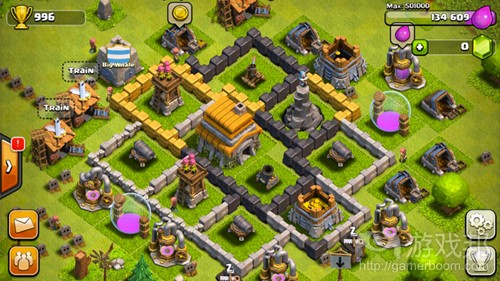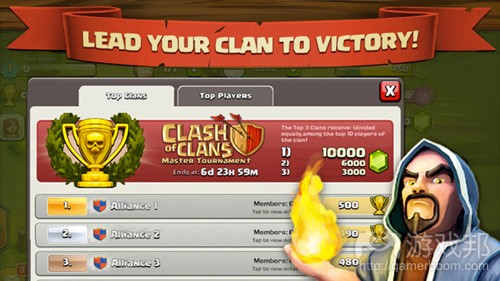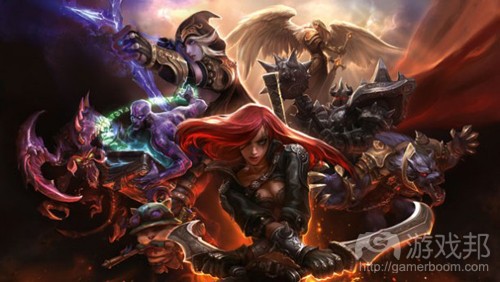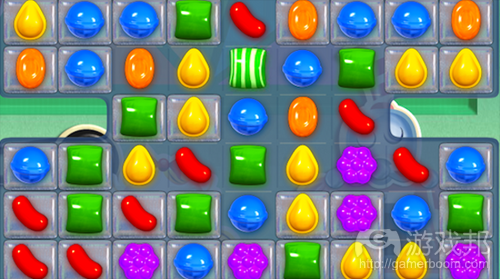F2P开发者的惯用“伎俩”正在失效?
《Clash of Clans》式的游戏可能会灭绝,除非它们能提供更加可以长期吸引玩家的东西。
不久以前,电子游戏的粉丝可以通过阅读杂志获知几乎所有即将发布的游戏。然而,随着独立开发事业的蓬勃发展和自主发行的机会增多,情况似乎变了。开发工作室Donut Games,自2009年中起,已经发布了35款iPhone游戏——并且都是还不错的游戏,但仍然不为大部分玩家所知。我们怎么跟进整个行业的重大动向?
现在的玩家可以玩的游戏比以前更多了,且随着免费模式的兴起,越来越多游戏必须让玩家上瘾:玩-付费-长期沉迷。结果是,这种压力迫使开发者采用书上看来的各种伎俩来吸引玩家,这已经成为一种商业刚需。在几乎所有游戏中,开发者都大量采用排行榜、升级系统和收集道具,目的就是创造让玩家继续玩下去的动机,把玩家长久地留在游戏中。
问题?我们玩了上百款游戏后,我们的名字出现在无数排行榜的底层,我们的成就记录比我们的年薪还高,我们把无数时间用于在这款游戏或另一款游戏中升级。我们收集了比迪士尼动画角色守财奴唐老鸭还多的金币。
以前,这些是让我们对游戏着迷的红利元素,但我们很少质疑它们为什么或如何起作用。如果游戏只采用这些伎俩,且如果我们玩过太多以些为噱头的游戏,我们还会被吸引吗?我们会不会成为第一代对一度不可抗拒的诱惑——得分和升级系统免疫的玩家?
在短短的时间内,Zynga已经关闭了近30款游戏。其中许多甚至没能让玩家记住它们的名称(游戏邦注:比如《Ponzi Inc》、《Roller Coaster Kingdom》、《Street Racing》),但也有一些名头响当当的游戏,如《CityVille 2》、《The Ville》、《Mafia Wars 2》。对于Zynga而言,关闭游戏只是商业的一部分。2012年底,Zynga关闭了整整13款游戏,其前首席执行官Mark Pincus在备忘录中写道,关闭游戏和裁员过百人是“降低总体成本计划中令人悲痛的一部分”。显然,被关闭的游戏的人气正在消失,赢利能力大不如前,所以必须停止运营。
似乎没有一款Zynga社交游戏能够维持生存超过若干年的。有趣的是,这条准则的唯一例外竟是Zynga的第一款游戏《Zynga Poker》和Zynga从其他工作室收购来的《Words With Friends》。二者都属于Zynga最热门的游戏,同时也是历史最悠久的。当然,这两款游戏都只是把更古老的知名游戏改头换面了一下,但这就是它们比Zynga的原创游戏活得更长久的原因吗?
这些游戏有深刻丰富的设计,很擅长留下玩家。比如对于《Zynga Poker》,Zynga随便做了一个外部奖励系统,但那不是使这款游戏吸引人的原因。《Zynga Poker》是一款与数学运算和心理学有关的复杂的游戏,它创造了一个强大的社交体系,把所有玩家都变成社交网络的一部分。
《Triple Town》的开发工作室Spry Fox的创始人Daniel Cook表示,Zynga的两款长青树游戏以丰富的多人体验见长,并非巧合。“玩家厌烦了绝大部分单人游戏。而大部分Zynga的游戏其实是单人游戏—-不要被异步社交互动欺骗了。”
Cook补充道,当多人游戏设计得当时,玩家会玩得更频繁。“我们玩游戏时,往往把游戏当作独立的内容,但通常是更大的社交系统使游戏获得长久的吸引力。”
(这款Zynga的高收益游戏之一已经停服了。)
当然,许多游戏并没有强大的社交元素,但一样很让人上瘾。有些游戏利用人类的某种心理倾向来引诱玩家。例如,当面临选择时,大多数人不希望遭受损失。事实上,普通人的避免损失的倾向比他们追求获得的渴望更强烈。
这个概念在行为经济学中被称作“损失规避”,是1984年Amos Tversky和Daniel Kahneman(Kahneman后来因提出“期望理论”而获得了2002年的诺贝尔经济学奖,“期望理论”中涉及“损失规避”这个概念)在合写的论文中提出来的。
Kahneman在2011年出版了一本题为《Thinking, Fast And Slow》的书。在这本书中,他引用了从赌博者当中收集到的数据证明了损失规避对人的大脑的影响。根据这些数据,我们很容易就能推断出,为什么收集类游戏具有那么强的致瘾性。
看看你的手机里的应用。我们当中许多人都安装了《Temple Run 2》,尽管我们不再经常玩它了,但我们却不能删掉它。我们不想再玩它了,但一想到我们曾经在这款游戏中花了那么多时间升级角色、收集金币,删除它意味着失去所有成就。我们潜意识里就厌恶失去我们辛苦获得的东西。
“你不想离开这些游戏,就像删除你的游戏存档或烧掉你的《万智牌:旅法师的对决》。”
(《Clash Of Clans》中有很多设计依靠肤浅而易操纵玩家的辅助元素。)
《Clash Of Clans》是一款战斗策略游戏,在同类游戏中似乎已经无敌了。自发布起,它就位居Android和iPhone的收益排行榜前列。当它的开发工作室Supercell公布这款游戏的月收益高达数百万美元时,投资商们几乎发疯了。
根据游戏化的支持者,《Clash Of Clans》的问题是,它的许多设计依靠肤浅但易操纵玩家的辅助元素,如排行榜、可收集道具、升级和宝石—-这些都是致瘾性社交游戏的主要原料。如果把这些元素都移除了,那么剩下来的《Clash Of Clans》也不过就是一款乏味的塔防小游戏。
Bunchball公司的创始人和《Loyalty 3.0》的作者Rajat Paharia对《Clash Of Clans》的设计颇有微词。他表示,尽管像排行榜和升级系统这些东西可以吸引玩家一阵子,但如果游戏的核心中没有真正有趣的东西,游戏最终会衰弱。“无论何时我们迷上任何一种系统,我们都会问:‘它能给我带来什么?’游戏必须给这个问题一个充分的回答。”
根据Paharia,任何娱乐服务为了保持受众的兴趣,必须有足够的深度或不断地提供新东西。“比如电视,每周都会播放新节目;比如社区网站,社区成员就是内容的创造者。如果有一个新闻网站不能每天更新文章,那么就没救了。”所以,像《Clash of Clans》的游戏面临着灭绝的风险,除非它们能提供更多有趣的内容,以便长期吸引玩家?Paharia表示:“我一点也不惊讶。”
(游戏研究公司Immersyve主管Scott Rigby主张开发者以长期沉浸感为设计目标。)
游戏研究公司Immersyve主管Scott Rigby同意Paharia的论断。“开发这些游戏的人会发现他们的主要财源渐渐干涸,除非他们可以保证设计出更有深度的游戏机制。”
Rigby补充道,有许多游戏可以作为案例。他回想起Foursquare于2010年秋季发起的健康生活活动。这家公司与健康监控公司Health Month合作,要求用户完成健康目标,比如每天行走20000步,或者旅行1000英里,完成目标的用户可以获得徽章。
这个想法很简单:用电子游戏式的系统鼓励玩家养成更健康的生活习惯。两年后,这个活动的人气下降了,根据Foursquare的博客,“这些徽章的一个大缺点是……不太能鼓励玩家坚持行走20000步或奔跑5000米,因为你每次只能获得一个徽章。”
Foursquare的健康生活活动的失败教训也是游戏化面临的一个核心问题:“你把获得徽章变成重点,而不是活动本身。这是一个大问题,因为你的目标是促进健康。你希望人们把那些健康行为的价值观内化,而不是通过徽章外化它。”当用户因行走20000米获得徽章后,他们追求其他徽章(如行走50000步)的动机会慢慢地消失。Rigby表示:“到某一时刻,我得说,徽章对我的吸引力太弱了。”
玩家知道自己什么时候是被故意刺激的,但动机和被操纵之间是有明确的界线的,特别是当设计师引导系统的用户做一些可能对他们有利的事情时。游戏化的主力倡导者Gabe Zichermann在2010年Google Tech Talk的题为“Fun is the Future: Mastering Gamification”的演讲中,露骨地解释了游戏必须操纵玩家。
Zichermann表示:“游戏有一个特性,能够以非强迫的方式让玩家做一些他们并不总是感兴趣的事。”他谈论的是游戏内奖励的效力在于以特定的方式引导玩家。利用这种操纵性奖励,对开发者是很有吸引力的,因为它们可以在短期内使玩家按照开发者的意图做出行为。但是,由奖励生成的表层最终会衰竭。
(《太空侵略者》的设计师和第一个排行榜的发明者西角友宏。)
自排行榜第一次出现起,开发者就把它当作刺激玩家长期游戏的工具。最先开始使用排行榜的游戏是发布于1978年的《太空侵略者》。该游戏的设计师西角友宏表示,尽管他从来没有对游戏上瘾,但他深知排行榜对玩家的吸引力。“我认为玩家会查看每天的排行情况,然后受到刺激而花钱,试图打败那些名列前茅的人。虽然排名一开始很有效,但随着时间流逝,排名的重要性越来越低。“
所以,35年过去了,我们甚至到了质疑排行榜是否重要的程度。Daniel Cook并不这么认为,但确实承认:“如果你不关注谁上了排行榜,那么排行榜的社交效力就消失了。”
“重要的不是排行榜的数量,而是排行榜所反映出来的玩家与社区的关系的质量。准确反映技术或投入的朋友型排行榜也许总是有意义的。我们的大脑往往本能地在意我们在同伴们当中的相对地位。”
然而在排行榜的长期效力上,有些游戏设计师并不同意Cook的观点。NYU Game Center总监Frank Lantz认为排行榜“把单人游戏粗暴地变成竞争型游戏”,但承认升级系统和收集道具等游戏元素确实是充实游戏玩法的有益工具。
Lantz是Riot Games的热门免费游戏《英雄联盟》的超级粉丝。在具有噱头特征如收集道具,且玩法深刻足以长期吸引玩家的游戏中,他认为《英雄联盟》就是杰出代表。
(Lantz认为《英雄联盟》的成功是因为它非凡的深度。)
Lantz把《英雄联盟》的巨大成功归因于它令人发指的复杂度,它与足球和扑克牌类似,许多规则随着时间缓慢地发生变化。他发现,《英雄联盟》的机制的来源——由《魔兽争霸》的MOD游戏DotA演化而来的,尤其重要。他指出:“Riot里有许多优秀的设计师,他们为《英雄联盟》贡献了许多奇思妙想。但说到底,它只是十多年前就诞生的DotA的变体。”
尽管有着“翻版DotA”的出身,《英雄联盟》仍然成为世界上最流行的游戏之一。“十年以后,百万人在玩和观看这款可能成为‘新足球’的游戏。讽刺的是,当Riot和Valve为谁将成为NBA大打出手时,暴雪却一直在当旁观者。”
Lantz称《英雄联盟》是“谦逊的典范”,因为它公然挑战关于什么是优秀游戏设计的权威观点。“实在太复杂了,很难从表面上理解,主题荒唐,新玩家几乎无法理解。但开发者并不关心我们的经验法则,《英雄联盟》狠狠地嘲笑了每一个信奉‘易玩性’和‘吸引力’教条的人。”
换句话说,《英雄联盟》有深度。它是一个异常丰富的系统,似乎有无尽的新意等待玩家去挖掘。甚至熟悉这种游戏模式的玩家进入这款游戏时,也不能不感到惊讶。甚至玩了多年以后,他们仍然为它的深度感到不可思议。
(现在有很多人在玩《Candy Crush Saga》——但它能持久地吸引玩家吗?)
会玩下一款超级免费游戏的人应该已经玩过或正在玩《FarmVille 2》和《Candy Crush Saga》。他们应该已经积累了许多金币,建了若干虚拟村庄,收集了比小孩在万圣节时得到的还多的糖果。他们希望发现惊喜–单有升级系统、排行榜和金币收集已经不能满足他们了,至少不能长期。
Scott Rigby表示:“绝大部分人认为没有理由在这些游戏中花甚至一毛钱。粗制滥造的东西太多了,我们必须更加关注品质,而不是忙着从那3%的付费玩家手中尽量抢钱。”(本文为游戏邦/gamerboom.com编译,拒绝任何不保留版权的转载,如需转载请联系:游戏邦)
Grinding to a halt: are the tricks developers use to hold our attention losing their power?
by edge-online
Games like Clash of Clans could die out unless they offer more to engage players longterm.
Not too long ago, any fan of videogames could read a magazine and feel informed about nearly every quality game coming down the pipe. With the rapid expansion of the indie development scene and self-publishing opportunities such as smartphone app stores, however, that’s no longer the case. One obscure developer, Donut Games, has released 35 iPhone games since mid-2009 – and not crappy iPhone games, either. How are we to keep with up with an entire industry’s worth of such releases?
More games are being played than ever before, and with the rise of the free-to-play model, more of them need to keep players hooked: playing – and paying – for long stretches of time. As a result, the pressure on developers to deploy every trick in the book to keep users engaged has become a commercial imperative. In almost every game, developers attempt to entice players with leaderboards, level-up systems, and entire catalogues of collectible items, all in the name of creating incentives for them to keep playing.
The problem? After playing hundreds of games in our lifetime, our initials are etched somewhere near the bottom of countless leaderboards, our achievement tallies are higher than our annual salaries, and we’ve levelled up in one game or another thousands of cumulative times. We’ve all collected enough coins over the years to shame Scrooge McDuck.
Once upon a time, these were the bonus elements that kept us addicted to videogames, but we seldom question why or how they work. How far can games coast on these features alone, and if we play too may games that use them as gimmicks, will they cease to motivate us? Will we become the first generation of players to be immune to the once-irresistible allure of point systems and levelling up?
The Ville, one of many high profile Zynga game closures.
In its short history, Zynga has already shut down close to 30 of the games it has developed. Many of them are titles that few will remember (Ponzi Inc, Roller Coaster Kingdom, Street Racing) but there are some big names on the list as well – CityVille 2, The Ville, Mafia Wars 2. For Zynga, game closures are just a part of business. After closing down 13 games in one big batch near the end of 2012, CEO Mark Pincus wrote in a memo that both the shutdowns and the over 100 layoffs that followed were “the most painful part of an overall cost reduction plan”. Put plainly, the axed games were losing popularity and bringing in less money than before, and thus had to go.
It seems that no single one of Zynga’s social games is able to sustain itself for more than a couple of years. The exceptions to that rule, interestingly enough, are Zynga’s very first game, Zynga Poker, and a game Zynga acquired through purchasing an existing studio: Words With Friends. Poker and Words are among Zynga’s most popular titles, and they’re also among the oldest. Of course, both games are simply repackaged forms of much older, well-known games, but is that the reason they consistently outlive Zynga’s original titles?
These are games with deep, rich game design and much to teach players who stick with them. In the case of Zynga Poker, the company has slapped on external reward systems, but that isn’t what makes the game engaging. Poker is a complex game of mathematics and psychology, and it creates a powerful social structure where players matter to each other.
Daniel Cook, founder of Tripletown developer Spry Fox, says it’s no coincidence that Zynga’s two longest-lived games feature rich multiplayer experiences. “Players burn out on the vast majority of singleplayer games,” Cook says, “and most of Zynga’s games were singleplayer experiences; don’t let the incredibly light asynchronous social interaction fool you.”
Cook adds that when a multiplayer game is richly designed, players mentor one another and encourage each other to play more often. “We tend to focus on games as if they are isolated content,” he says, “but it is usually due to the bigger social system why we find games enjoyable long term.”
“Most of Zynga’s games were singleplayer; don’t let the social interaction fool you,” says Spry Fox founder Daniel Cook.
Of course, plenty of games without strong social elements can also be addictive. Some of these games latch onto players by exploiting – knowingly or unknowingly – certain human psychological biases.
For example: given the choice, most people have a deep aversion for incurring loss. In fact, the average person’s preference for avoiding loss is significantly greater than their impulse for chasing gain.
This concept is known within the field of behavioural economics as loss aversion, and it was first convincingly argued in a 1984 paper written by Amos Tversky and Daniel Kahneman (Kahneman later won the 2002 Nobel prize in economics for his work in prospect theory, which includes loss aversion).
In his 2011 book entitled Thinking, Fast And Slow, Kahneman uses data collected on the betting habits of subjects to prove loss aversion’s effect on the human brain, and it’s easy to extrapolate the findings to improve our understanding of why collect-a-thon games can be so addictive.
Think about the pages of apps on your phone. Many of us have installed Temple Run 2, for example, and although we don’t play it regularly any more, we find ourselves unable to delete it. We consider getting rid of it, then think about all the time we spent upgrading our character, collecting and spending thousands of coins. Deleting the app would mean losing all that work. We are, at heart, averse to the idea of losing what we perceive as earned value.
“You don’t want to leave these games,” says Cook. “It starts to feel like deleting [your] saved game or burning your Magic: The Gathering collection.”
‘Much of Clash Of Clans design relies on shallow and manipulative ancillary elements.’Clash Of Clans is a combat strategy game that today seems nearly invincible. It has clung to its coveted spot among the top-grossing apps in the world on both Android and iPhone since its launch, and its creator, the Helsinki-based Supercell, sent investors scrambling when it revealed that the game brings in tens of millions of dollars every month.
The problem with Clash Of Clans, according to gamification proponents, is that much of its design relies on shallow and manipulative ancillary elements like leaderboards, collectibles, levelling, and gems –all the staples of sugary, addictive social games. With all of those elements removed, it seems that there isn’t much left to Clash Of Clans aside from a barebones tower defence minigame.
Rajat Paharia, founder of gamification company Bunchball and author of Loyalty 3.0, is critical of Clash Of Clans’ design approach. He says that although things like leaderboards and levelling systems can snag players for a time, if there isn’t something truly interesting at the core of a game, it will eventually die. “Whenever we engage with any kind of system, we ask: ‘What’s in it for me?’ And there has to be a good answer to that question,” he tells us.
According to Paharia, the core of any entertainment service has to either offer great depth or constantly offer something new in order to keep people interested. “With [TV networks], there’s a new show every week,” he says. “With a community site, the community members are the creators of that content. If I have a news site that doesn’t have new articles every day, no amount of gamification will help.” So are games like Clash of Clans in danger of eventually dying out unless they offer more interesting content to engage players for the long-term? “I would not be surprised at all,” says Paharia.
Head of the gaming research company Immersyve Scott Rigby urges developers to design for longterm engagement.
Scott Rigby, head of the gaming research company Immersyve, agrees with Paharia’s assessment. “The people developing these games are going to see their primary revenue sources dry up unless they can ensure that they’re designing game mechanics with more depth,” he says.
Rigby adds that there are plenty of examples outside of games where this has already occurred. As an example, he recalls a healthy living programme that Foursquare initiated in the autumn of 2010. The company partnered with health monitoring companies like Health Month to award its users badges for accomplishing healthy goals, such as walking 20,000 steps in one day and travelling 1,000 miles in total.
The idea was simple: motivate people with a videogame-like system and they’ll adopt a healthier lifestyle. The programme was cancelled a little under two years later and, as one Foursquare-centric blog noted, “One big weakness of the badges… was that they didn’t do much to encourage users to keep finding ways to take those 20,000 steps or run another 5km, since you could only earn each badge once.”
The lesson to take from the failure of Foursquare’s healthy living programme is also a testament to one of the core issues facing gamification: “You make the point of what you’re doing getting the badge, rather than the activity itself,” Rigby says. “This is a concern, because you’re trying to promote health. You want to get people to internalise the value of those healthy behaviours, not externalise it through a badge.” After users acquired the Foursquare badge for walking 20,000 steps, Rigby argues, their motivation for pursuing subsequent badges (for 50,000 steps or a million) slowly disappeared. “At some point I’m going to [say], ‘This is much too thin for me to stay engaged,’” says Rigby.
Players know when they’re being intentionally motivated, but there is a fine line between motivation and manipulation, especially when a designer is trying to persuade a system’s users to do things that may not be good for them. One of gamification’s most prominent voices, Gabe Zichermann, baldly stated the power that games have to manipulate players in a 2010 Google Tech Talk entitled ‘Fun is the Future: Mastering Gamification’.
Zichermann said: “Uniquely, games are able to get people to take actions that are not always in their best interest – without the use of force – in a predictable way.” In this scenario, he was talking about the power of in-game rewards to direct player actions in specific ways. Utilising such manipulative rewards can be seductive for developers, Rigby says, because they’ll drive behaviour in the direction the devs want in the short term. Eventually, though, he argues, the superficial layer created by rewards will collapse.
Space Invaders designer and inventor of the first leaderboard, Tomohiro Nishikado.
Since leaderboards first emerged, developers have used them as a tool to keep players playing. The very first game to use one was Space Invaders, released in 1978. The game’s designer, Tomohiro Nishikado, says that although he’s never really become addicted to a game, he understood the power that leaderboards could have on players. “I thought players would see each day’s high scores and be motivated to pay their coins and try to beat them,” Nishikado tells us. “But while rankings are effective early on, I think they become less important as time passes.”
So, nearly 35 years on, are we finally nearing a point where leaderboards don’t matter? Daniel Cook doesn’t think so, but offers specific qualifications: “If you don’t care about anyone on the leaderboard, the leaderboard loses its social power,” he says.
“It is less about the number of leaderboards and more about the quality of the player’s connection with the community that the leaderboard represents. Friend-based leaderboards that accurately represent skill or investment will likely always be meaningful. Strong signals of relative status within peer groups tend to entrance our little ape brains.”
Some game designers, however, don’t share Cook’s belief in the long-term viability of leaderboards. NYU Game Center director Frank Lantz calls leaderboards “a crude way to make a singleplayer game into a competitive [one]”, but says that game elements like level-up systems and collectible items can be valuable tools used to flesh out core gameplay.
Lantz is an outspoken fan of Riot Games’ phenomenally popular free-to-play game League Of Legends, and he considers it to be the perfect example of a game that uses sometimes-gimmicky features like collectible items, but also has enough valuable and deep gameplay to keep players’ attention for a long time.
League Of Legends’ success is because of its extraordinary depth, says NYU Game Center director Frank Lantz.
Lantz attributes League Of Legends’ immense success to its infamous levels of complexity, comparing it to football and poker, both of which evolved slowly over a number of years with many rule changes. He notes the origins of LOL’s mechanics – it evolved from the Warcraft III mod Defense Of The Ancients – as being particularly important. “There are [lots] of smart designers at Riot, and there’s a bunch of smart and original design thinking in League,” Lantz says, “but under the hood it is just a variant of DOTA, a game that has been evolving for ten years or more.”
Despite its cobbled-together beginnings, League Of Legends is one of the most popular games in the world. “A decade later, and millions of people are playing and watching what just might be the new basketball,” Lantz says. “Ironically, Blizzard is sitting on the sidelines watching as Riot and Valve fight over who gets to be the NBA.”
Lantz describes League Of Legends as a “wonderful object lesson in humility”, because it defies common wisdom about what makes good game design. “It’s overly complicated, hard to visually parse, thematically ridiculous, and almost impossible for new players to understand,” he says, “but the world doesn’t care about our rules of thumb. League flouts every weak-ass homily about ‘accessibility’ and ‘appeal’.”
In other words, League Of Legends has depth. It’s an incredibly rich system with a seemingly endless list of discoveries for players. Even players familiar with the mods that preceded it come into the game prepared to be surprised. Often, even after years of play, they are.
Millions are playing Candy Crush Saga right now – but will its hooks retain players longterm?
The people who play the next big freemium game will have played FarmVille 2 and Candy Crush Saga. They’ll have already collected a gold-plated windmill, built dozens of virtual villages and collected more candies than a kid on Halloween. They will want to be surprised – and levelling systems, leaderboards and coins alone won’t do the job, at least not in the long term.
“The vast majority of people aren’t seeing a reason that they should spend even a dollar on these games,” says Scott Rigby. “There’s so much churn, and we need to be more focused on that than on squeezing as much money as possible out of three per cent of players.”(source:edge-online)













































 闽公网安备35020302001549号
闽公网安备35020302001549号